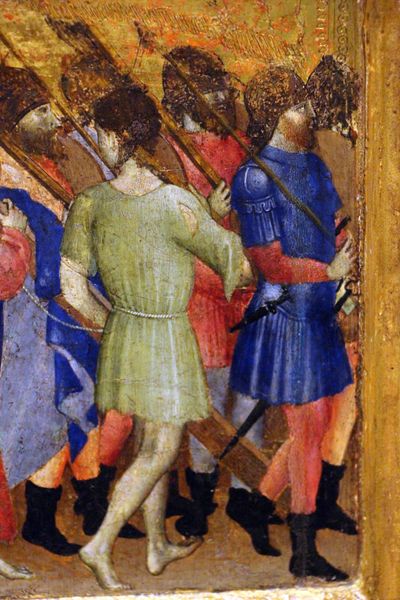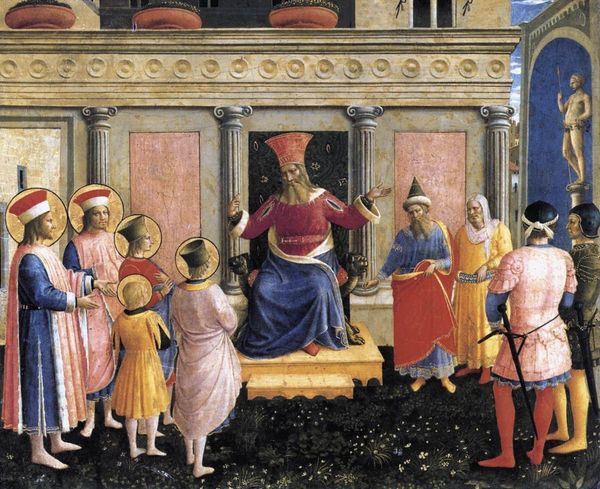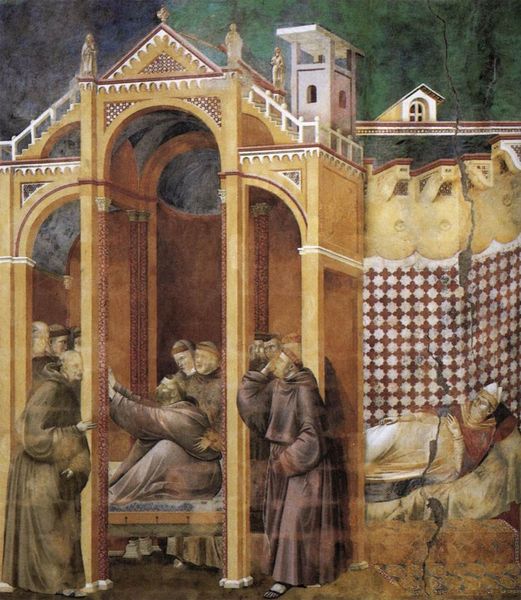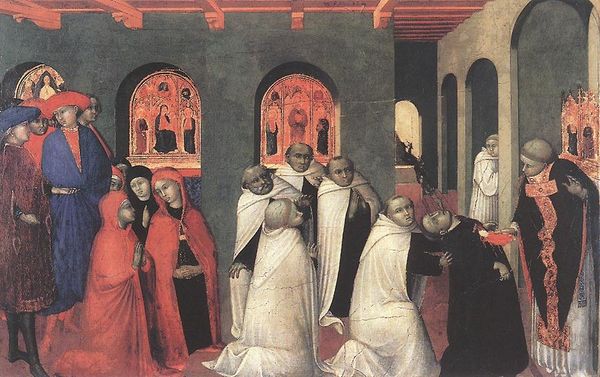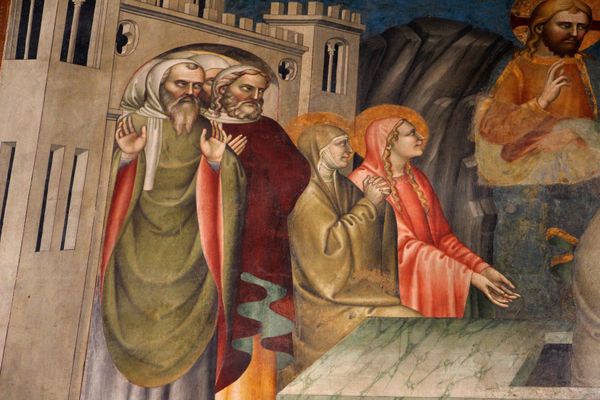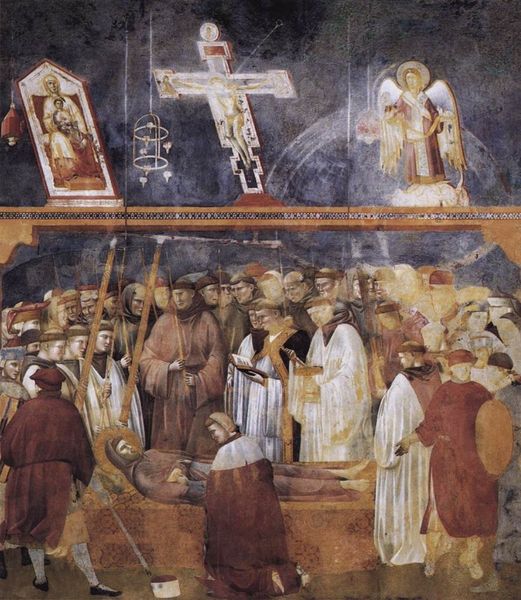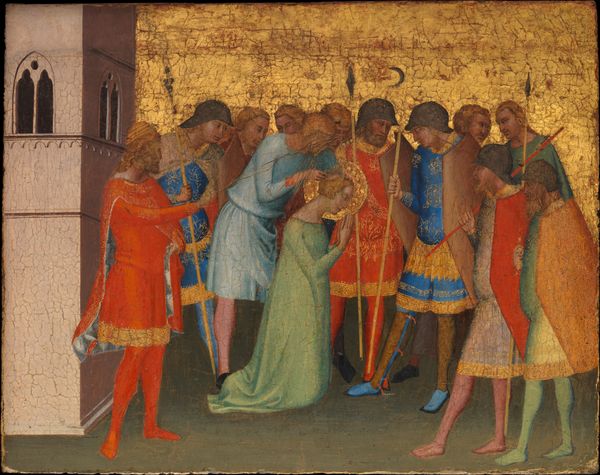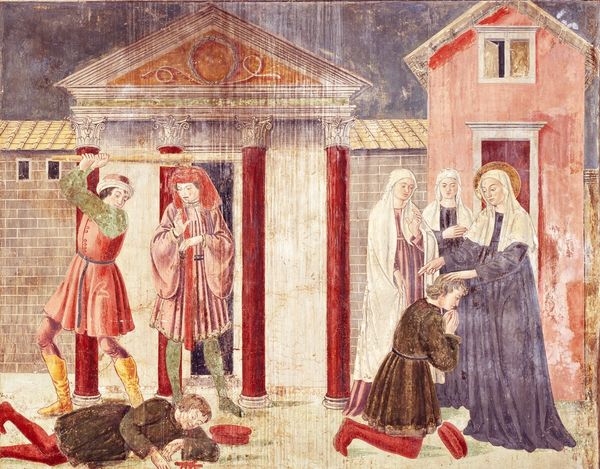
tempera, painting, textile
#
portrait
#
narrative-art
#
tempera
#
painting
#
landscape
#
textile
#
figuration
#
oil painting
#
child
#
christianity
#
painting art
#
watercolour illustration
#
history-painting
#
italian-renaissance
#
early-renaissance
#
virgin-mary
#
christ
Dimensions: 39 x 56 cm
Copyright: Public domain
Curator: Before us hangs Fra Angelico's "Adoration of the Magi," a tempera on panel completed around 1433. Its an example of early Italian Renaissance art at its finest. Editor: The overwhelming sensation here is serenity, isn’t it? Even with the crowd of figures, there’s an undeniable calmness. A light, almost ethereal quality, blankets the scene. Curator: I think that has much to do with the patronage of the painting by the wealthy Medici family, as they were able to bring humanist values to art that shaped social contexts. It’s vital to view this piece within the social currents of its time, especially the evolving role of the church and merchantile influence on sacred imagery. Editor: Exactly! Look at the clothing. The vibrant reds and blues signal not just royalty but access to global trade routes for those pigments. It is hard to forget how luxury and devotion played out. And, of course, it's crucial we don’t erase the symbolism that weaves through it all – the three kings, their journey, their recognition of divinity in a baby. But the sheer elegance…it almost overshadows the humility inherent in the story. Curator: True. Angelico navigates that tension so skillfully. He’s also negotiating a shift in artistic priorities, a move towards more naturalistic depiction of landscape. See the way he handles the figures, not flattened but occupying space. But in line with more current notions of identity, what roles, social strata or types of persons does he erase, overlook or dismiss through the lens of painting and narrative? Editor: You can observe it specifically when looking at the placement of the figures—arranged for narrative clarity but also, undeniably, for compositional harmony and an upper class world view of the Renaissance city state. And this perspective creates more questions regarding societal access to spirituality...it all comes into play! Curator: Agreed. The piece shows us that artistic expression is not purely transcendent. This encounter provides context for reflecting upon our contemporary values of what devotion and social responsiblity means in terms of art. Editor: Absolutely. Seeing the piece through a sociohistorical lens just enriches our understanding of the values and circumstances in place at that point in time. It really lets us think critically about that dynamic.
Comments
No comments
Be the first to comment and join the conversation on the ultimate creative platform.


